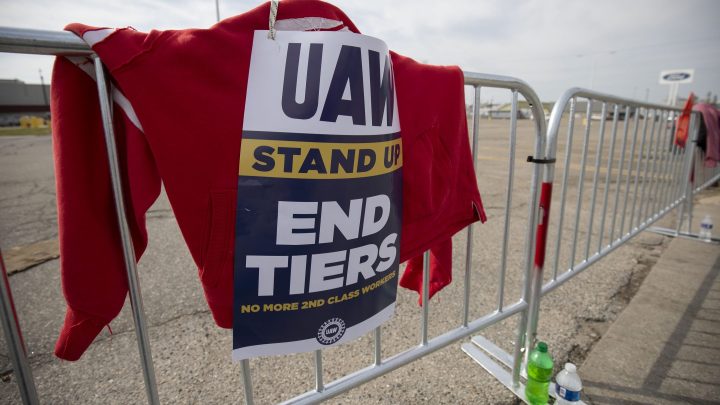
Automakers rely on temp and “tiered” workers. The UAW wants them to stop.
Automakers rely on temp and “tiered” workers. The UAW wants them to stop.

The United Auto Workers and the Detroit automakers failed to agree to new contracts this weekend. A shorter workweek and wage increases are among the union’s demands. But striking workers are also angry about how Ford, General Motors and Stellantis use temporary and so-called “tiered” workers, who receive lower pay and benefits for doing the same work.
When automakers faced bankruptcy in 2008, auto workers faced a tough decision: lose jobs or agree to contract changes that would help the companies get a federal bailout. The union chose the latter.
“This was a concession they had to make in order to sustain the bailouts and have some kind of recovery,” said Tod Rutherford, who researches labor and the automotive industry at Syracuse University.
From that moment on, “almost all of the workers that were hired were on some kind of a tiered system,” he said.
Up to 40% of workers in some plants are tiered, said Rutherford. Up to 10% are temporary.
This lets the companies adjust their workforces depending on the economy, noted Harry Katz, a professor of Collective Bargaining at Cornell. It also saves them money.
“The base wage is less and the fringe benefits are substantially less for temporary workers,” he said.
And workers don’t have much room for movement. “A lot of these new hires get stuck in this limbo of not being able to move up to the higher tier,” said Victor Chen, the author of “Cut Loose,” a book about labor changes in the auto industry.
Some of those workers get stuck being temps for years. And it’s not just the automakers that do this, Chen added; temporary and tiered workers are becoming more common in hospitality, health care and other industries.
“Something like a quarter of union contracts include multiple tiered structures,” he said.
Unions can curb the use of these workers, Chen said, by establishing time limits on how long a person can stay in a tier or be classified as a temp.
There’s a lot happening in the world. Through it all, Marketplace is here for you.
You rely on Marketplace to break down the world’s events and tell you how it affects you in a fact-based, approachable way. We rely on your financial support to keep making that possible.
Your donation today powers the independent journalism that you rely on. For just $5/month, you can help sustain Marketplace so we can keep reporting on the things that matter to you.

















